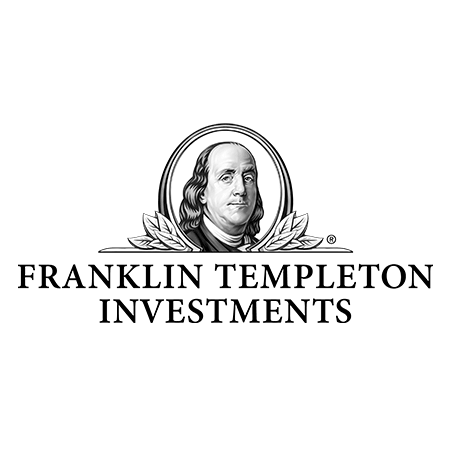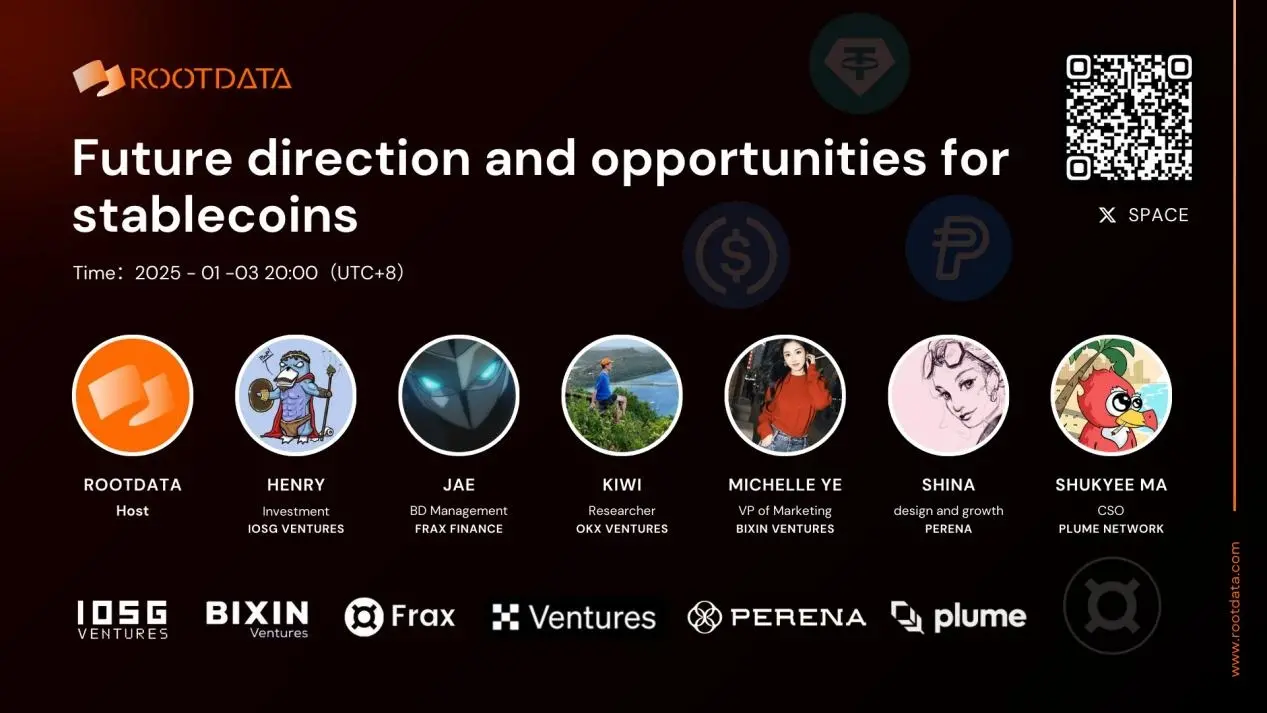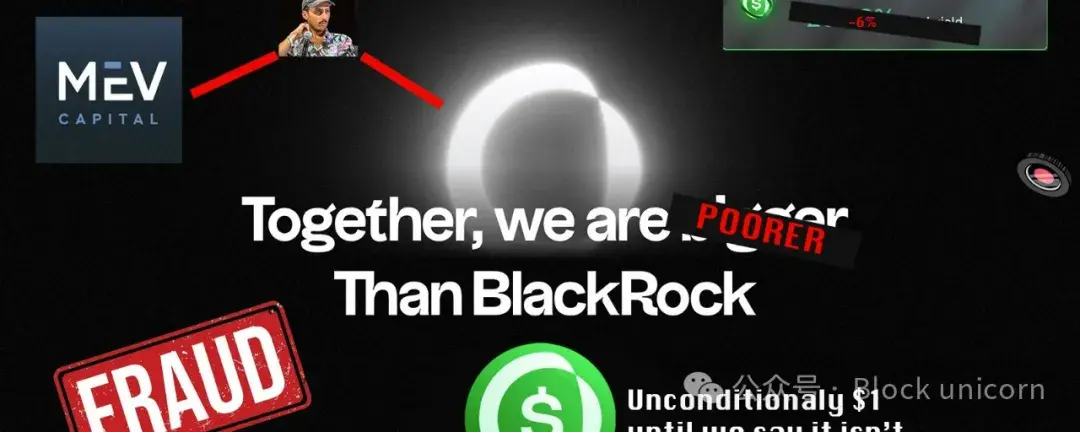HashKey: Discussing the Tokenization of RWA Using U.S. Treasury Bonds as an Example
Author: Cui Chen, HashKey
Reviewer: Zou Chuanwei, HashKey
After the Federal Reserve initiated the interest rate hike cycle, U.S. Treasury yields continued to rise. In contrast, the low-risk returns in the crypto market (lending rates, stablecoin AMM trading fees) are much lower. The increase in USDC interest income from Coinbase's financial report reveals that issuers of dollar stablecoins have earned substantial income by purchasing large amounts of U.S. Treasury reserves. Consequently, the topic of bringing Treasury income onto the blockchain has garnered significant attention, with participants including both traditional fund companies and DeFi protocols. U.S. Treasuries are a type of RWA (Real World Assets), and the tokenization of RWAs will bridge on-chain and off-chain, representing a direction for large-scale application of blockchain technology under increasingly refined regulatory frameworks. This article discusses the topic of bringing U.S. Treasury income onto the blockchain, focusing on the tokenization of Treasuries and cases of indirectly introducing Treasury income, exploring the ways in which Treasuries can be combined with tokens, which is also a form of RWA tokenization.
I. The Combination of U.S. Treasury Investment Returns and Tokens
U.S. Treasuries mainly come in four forms: short-term Treasury bills (Bills), medium-term notes (Notes), long-term bonds (Bonds), and Treasury Inflation-Protected Securities (TIPS), consisting of both publicly held debt and federal government internal debt. In the publicly held portion, individuals and institutions in the U.S., as well as foreign institutions and governments, can hold U.S. Treasuries. They can auction them in the primary market or purchase them in the secondary market through banks, brokers, and dealers. Due to factors such as the auction method, types, and maturities of Treasuries, participating in Treasury trading requires a high level of expertise. Treasury investors are primarily large institutions such as commercial banks, insurance companies, and mutual funds, which gives Treasuries the characteristics of bulk trading, with transactions concentrated in the over-the-counter market.[1]
U.S. Treasuries implement a multi-tier custody system, with over-the-counter transactions occurring between two main parties: transactions between dealers and clients, and transactions between dealers. Treasury trades are typically settled on the second business day. Although primary custody is more efficient, the multi-tier custody system is a product of the paper-based era and has developed path dependence. Currently, discussions by the Federal Reserve and the Treasury regarding improving the efficiency of Treasury clearing and settlement and the reporting system for spot trading information still focus on the multi-tier custody system.
From the perspective of improving the efficiency and transparency of Treasury trading and reducing intermediary costs, the tokenization of Treasuries needs to be initiated by the U.S. Treasury at the source. This type of tokenization is a standard way of packaging Treasuries into tokens, requiring the U.S. government to issue or implement corresponding regulatory plans and entrust third parties to issue them. Since Treasury trading venues are concentrated in the over-the-counter market, tokenizing Treasuries may not necessarily expand the range of participants, and Treasury tokenization will not bring direct benefits to the issuer (unlike stablecoins). Therefore, there is currently no genuine Treasury token registered for issuance in the U.S.
Figure 1 shows the main participants in U.S. public debt (including Treasuries), and the current discussions on Treasury tokenization are concentrated on mutual funds and corporate holdings.

Figure 1: Participants in U.S. Public Debt (Source: CICC Fixed Income Research)
For ordinary retail investors, Treasury investment can be done through mutual funds or ETFs, and the tokenization of fund or ETF shares is the current method being promoted. To comply with regulatory requirements, holders of fund share tokens must adhere to the same regulatory standards, such as KYC. Therefore, this does not lower the entry barrier for investors but merely adds a new method of share circulation. If this method attracts investors to participate in fund investments, fund management companies can earn management fees.
When a company holds Treasury assets, it can simultaneously issue a token that counts as a company liability, thereby binding Treasuries with tokens, allowing the company to collect management fees or token minting fees. Tokenization of Treasuries in this form will impose identity, lock-up period, and minimum purchase amount requirements on investors, which similarly does not lower the investment threshold. The Treasuries held by the company are assets for the company, but the tokens issued by the company are liabilities, and the tokens held by investors represent the company's liabilities, increasing the risk for holders.
To lower the investment threshold for Treasuries, some protocols further tokenize the shares of already issued Treasury investments. The underlying asset of the packaged token is the tokens already issued on-chain, and operations can be completed through smart contracts, with the protocol collecting minting fees and also issuing governance tokens.
Using stablecoins as a medium, Treasury investment returns can be indirectly brought into tokens. For example, the reserve assets of stablecoins can be exchanged for income-generating assets, and the resulting income can be distributed to investors who stake stablecoins. Alternatively, a lending pool can be used, allowing investors to deposit stablecoins into the pool, with borrowers distributing the income from Treasury investments to lenders as interest.
The following sections introduce the methods of Treasury tokenization and how Treasury income is brought to tokens, with some requiring investors to meet the issuer's requirements to hold tokens, while in non-permissioned systems, anyone can hold tokens and enjoy investment income. Additionally, there are applications that indirectly introduce Treasury income without issuing corresponding tokens.
II. Methods of Treasury Tokenization
(A) Tokenization of Mutual Fund Shares: Superstate, Franklin Templeton, WisdomTree
Robert Leshner, founder of Compound, announced the establishment of a new company, Superstate, on June 29, planning to launch a fund that invests in short-term government bonds, including U.S. Treasuries and government agency securities. Superstate has submitted a prospectus (N-1A form) to the U.S. Securities and Exchange Commission (SEC) and is awaiting SEC approval. In the fund design, shareholders can convert their fund shares into tokens stored on Ethereum.
The requirements for holding fund token shares are the same as those for investing in the fund; holders of fund share tokens need to register their addresses as part of the fund's whitelist. Addresses not on the whitelist will not execute transactions, and investors must be U.S. residents. However, the records on Ethereum are secondary records, and the official records of the fund's transfer agent are still managed in book-entry form. When there are record conflicts, if the on-chain transaction history is found to be incorrect according to the relevant record-keeping procedures, the fund manager will update the blockchain records. The peer-to-peer transfer function between whitelisted addresses on-chain may be enabled in the future depending on the regulatory environment, or it may not be enabled under regulatory restrictions.
In addition to Superstate, other institutions have also attempted mutual fund share tokenization. Fund management company Franklin Templeton launched a money market fund (Franklin OnChain U.S. Government Money Fund - FOBXX) that can circulate on the Stellar blockchain in 2021. The fund's transfer agent maintains official records through a private chain integration system, which combines the characteristics of traditional book-entry forms and public chains. The fund's unit shares are represented by the BENJI token, and investors can gain exposure to the token through the BENJI investment app, but this does not mean they can withdraw it to their on-chain wallets. Each app user is assigned a Stellar address, and there is also a requirement for investors to be U.S. residents.
WisdomTree also launched a fund investing in U.S. short-term Treasuries (WTSYX) on the Stellar chain in 2022, issuing shares on the Stellar chain. Similar to Superstate, the transfer agent will maintain official records in book-entry form, with the blockchain serving only as a secondary record. Investors also need to purchase through the WisdomTree Prime mobile app they launched.
(B) Exempt Issuance Method: Ondo Finance
Unlike the mutual fund approach, using exempt issuance to raise funds can save paperwork costs and meet the relevant requirements for mutual fund issuers. Correspondingly, exempt issuance requires investors to meet the SEC's definitions of accredited investors and qualified buyers. Below is an explanation of the exempt issuance method for Treasury funds using Ondo Finance as an example.
Ondo I LP is a fund structure within the Ondo Finance project, exempt from issuance under SEC Reg D Investment Company Act Section 3(c)(7), with OUSG being one of the funds investing in U.S. Treasuries. Qualified investors can use USDC to invest in OUSG, and these USDC are converted into dollars through Coinbase and given to Clear Street, which has brokerage and custody qualifications, to purchase U.S. Treasury ETFs, currently investing in the iShares Short Treasury ETF (ticker: SHV).
The redemption process is the reverse; Clear Street will sell ETF shares, and dollars will be converted back to USDC and returned to the investor's address through Coinbase. Therefore, investors must also register their Ethereum/Polygon addresses as whitelisted on Ondo and have a minimum purchase requirement of $100,000 USD. In addition to the management fees charged by the ETF, Ondo will also collect a portion of management fees and intermediary fees.
(C) Representing Company Debt: Matrixdock, Maple Finance
Matrixport's on-chain Treasury platform Matrixdock has launched the STBT (Short-term Treasury Bill Token) backed by U.S. Treasuries. The issuance and redemption process is similar to that of OUSG mentioned in Ondo Finance, allowing investors to directly use stablecoins to purchase Treasuries, with the project team converting stablecoins into fiat currency through Circle and then purchasing Treasuries via a third party. Unlike the fund issuance method, Matrixdock establishes an independent special purpose vehicle (SPV) as the entity to purchase and hold U.S. Treasuries. Figure 2 illustrates the process for investors to mint and redeem STBT.


Figure 2: The Minting and Redemption Process of STBT (Source: STBT Whitepaper)
Figure 3 shows the asset-liability situation of clients, the SPV company, the stablecoin exchange Circle, and the custodian bank. It can be seen that the STBT held by clients corresponds to the short-term Treasury assets of the SPV. If Matrixport goes bankrupt, STBT holders have priority liquidation rights over the SPV's assets.

Figure 3: The Issuance Process of STBT (Source: DODO)
Like other licensed Treasury investments, STBT also requires clients to undergo KYC and register their addresses on the whitelist, with a minimum investment requirement of $10 USD. Clients must also be certified as accredited investors, and services are not provided to clients from regions such as mainland China, Singapore, the U.S., and Canada.
Maple Finance has also launched a similar model called the cash management pool, allowing non-U.S. accredited investors and entities to participate in Treasury investments through USDC. An independent SPV established by Room40 Capital will be the sole borrower of this cash pool, and after deducting a 0.5% management fee, Treasury income will be returned to the stakers of the cash pool. In the Maple Finance cash pool, staking USDC requires investors to undergo KYC.

Figure 4: The Process of Investing in Treasuries through Maple Cash Management Pool (Source: Maple Finance)
(D) Permissionless Treasury Tokenization: T Protocol
T Protocol packages the STBT issued by MatrixDock to create a permissionless Treasury investment product, lowering the investment threshold for Treasuries. TBT is a packaged version of STBT, where investors send USDC to T Protocol, which mints TBT. Once T Protocol accumulates 100,000 USDC, it purchases STBT through partners. TBT, like STBT, is pegged to $1 and can be redeemed through the protocol, distributing Treasury income via a rebase mechanism. There is also a wTBT, which is a non-rebase version of TBT.
Behind TBT are the STBT purchased by the protocol and the USDC reserves that have not yet been converted into STBT. T Protocol acts as an intermediary between non-Matrixdock users and Matrixdock. T Protocol has also issued a governance token, TPS, to reward users and liquidity providers of the protocol. In this process, T Protocol packages tokens that require strict limitations, lowering the participation threshold for individuals, and the entire process does not involve KYC, while being pegged to $1, making it a potential competitor to stablecoins.
In addition, permissionless participation in Treasury investments also includes synthetic asset projects like the Synthetix protocol, which do not have real asset reserves behind them, so they will not be discussed further here.
(E) Summary
The following points regarding compliant Treasury tokenization are often misunderstood:
- First, tokenization is not aimed at the Treasuries themselves but at the tokenization of fund shares holding Treasuries and the debt tokenization of SPVs established by companies holding Treasuries;
- Second, tokenization does not mean that investors can directly operate on-chain Treasury transactions through general Ethereum wallets; wallet addresses must undergo KYC, and transfers are limited to whitelisted addresses to meet regulatory requirements;
- Third, for mutual fund tokenization, the blockchain is not the official ledger but serves as a secondary record, and investors' subscriptions and redemptions must occur during U.S. business hours.
The tokenization completed by funds or companies represents the introduction of fixed income from Treasuries into the crypto market, but to meet compliance requirements, tokens will circulate on-chain under strict KYC requirements, which is a common characteristic of the aforementioned Treasury token investment products with thresholds. These products will differ in terms of custody fees, redemption fees, and token pricing. For example, some tokens are fixed at a price of $1, distributing income through the issuance of additional tokens, while others may increase in price with income.
Compliant products have thresholds for investing in Treasury tokens, such as being limited to U.S. clients or accredited investors, which have limited impact on expanding the investor base and make it more difficult to reflect the value of increased liquidity. Their potential advantages include: the possibility of allowing P2P transfers between investors in the future, enabling investors to directly use stablecoins like USDC to purchase Treasury products, transparent on-chain data, and the role of stablecoins pegged to $1.
To lower the investment threshold for purchasing Treasuries and bring Treasury income to a broader audience, some projects repackage Treasury tokens to achieve permissionless Treasury token investments. Additionally, there are some activities that bring Treasury income onto the blockchain without issuing new tokens.
III. Indirect Methods of Introducing Treasury Income
In addition to tokenization, investors can obtain Treasury income by indirectly participating in applications. Below are two examples.
(A) Treasury Asset Reserves
As an asset reserve-based decentralized stablecoin project, Maker has been continuously attempting to convert its reserve assets from on-chain native assets to RWAs. Its purpose is not only to hedge the risks posed by price fluctuations of on-chain native assets to the protocol itself but also to increase protocol income through RWAs. Previously, more than half of Maker's reserve assets came from its PSM (Peg Stability Module), which attracted stablecoins through a fixed exchange rate to convert USDC and other stablecoins into DAI. However, these reserve stablecoins did not generate income for the Maker protocol, so Maker commissioned Monetail to set up a trust structure, following a structure similar to that mentioned above using USDC to purchase Treasuries. The reserve assets will first be converted into fiat currency, and then the custodian bank will purchase Treasury ETFs. However, unlike the projects mentioned above, the income from Treasury ETFs belongs to the Maker protocol, which increases the deposit interest rate of DAI through DAI's monetary policy, distributing protocol income to DAI holders. For example, in June, the Maker community raised the deposit interest rate of DAI from 1% to 3.49%, which stemmed from the increase in Maker protocol income.
(B) Lending Protocols
If Treasuries are used as collateral to borrow stablecoins through on-chain protocols, and then a certain interest income is given to the lenders, it is equivalent to bringing the income from Treasuries to users participating in on-chain application protocols. For example, Ondo Finance launched a decentralized lending protocol, Flux Finance, allowing holders of OUSG to stake OUSG to borrow other stablecoins. The lending pool in Flux Finance is permissionless, enabling indirect income from others' Treasury investments.
The liquidation mechanism of Flux Finance is similar to that of Compound, but since the collateral asset is a Treasury ETF, the lending risk is much lower than that of protocols collateralized by crypto assets. The collateral OUSG requires whitelisted addresses to hold, so liquidators must also undergo KYC with Ondo Finance. Flux Finance is governed by the ONDO token issued by Ondo DAO.
IV. Thoughts and Conclusion
Market discussions about the broad concept of Treasury tokenization mainly refer to bringing the investment income from Treasuries onto the blockchain, rather than the tokenization of Treasuries themselves. Although issuing Treasuries on the blockchain can improve clearing and settlement efficiency, reduce custody levels, and enhance transparency, this activity requires the U.S. Treasury, the issuer of Treasuries, to promote it.
Tokenizing shares of Treasury investment funds is one of the mainstream methods, but purchasers of such Treasury tokens must comply with the regulatory framework of fund issuance, such as KYC and minimum purchase limits under exemptions. For example, for mutual funds, the largest reserve of Treasury tokenization currently is Franklin Templeton's BENJI issued on Stellar, which investors can only purchase through traditional application endpoints, differing from the imagined direct purchase of investment products using Ethereum wallets.
Company debt is also an investment product, and the Treasury tokens held by investors originate from company debt, while the company's holding of Treasury assets also counts as a form of Treasury tokenization. However, this method poses higher risks for investors and does not lower the investment threshold, leading to projects that package original tokens to reduce the investment threshold.
Using a rebase mechanism to distribute Treasury income, Treasury tokens pegged to $1 will become competitors to stablecoins. Although Maker has taken the lead in purchasing RWAs with reserve assets, the circulating DAI itself does not generate appreciation income. In the LSD field, stETH, which has staking income attributes issued by Lido, has replaced ETH in DeFi application scenarios, and the competitive landscape for stablecoins in the future will also be influenced by Treasury tokens pegged to $1. However, under strict regulatory requirements, permissionless Treasury tokens will face limitations.
Beyond U.S. Treasuries, the tokenization of RWAs can generally be divided into three forms: the tokenization of the assets themselves, the tokenization of investment products containing assets, and the on-chain indirect introduction of asset income. These three methods involve different issuers and represent varying degrees of difficulty and flexibility in tokenization. Treasury tokenization is a typical case of RWA tokenization, and the entire process illustrates the procedures that need to be resolved through intermediaries between on-chain and off-chain, where the more intermediaries and steps involved, the higher the costs.












